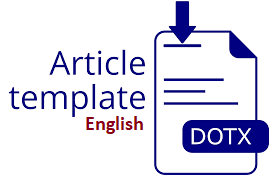Evaluasi Usability Sistem Informasi Penelitian dan Pengabdian Masyarakat Menggunakan Heuristic Evaluation dan Human-Centered Design
DOI:
https://doi.org/10.30865/klik.v3i6.874Keywords:
Evaluation; Usability; User Interfaces; Heuristic Evaluation; Human-centered DesignAbstract
Education is an asset for successfully building human resources in competition in the digital age. The world of education must increase the effectiveness of building education in this country in accordance with increasingly sophisticated technological advances such as the Information System for Research and Community Service (SIP). SIP is used to assist organizations in reporting work processes as operational achievements of external organizations as well as enabling task completion. The main problem with the SIP website is that it has never been evaluated in terms of usability since the system was used. This study aims to evaluate the usability of SIP websites using Heuristic Evaluation and Human-Centered Design. Usability is a very important factor for website acceptance. The Heuristic Evaluation uses 3 evaluators to assess the SIP website and uses 10 Heuristic Evaluation principles. The Human Centered Design method is used as a tool for developing designs and interactive systems that focus on user needs. From the results of the initial Heuristic Evaluation carried out by 3 evaluators by producing 21 problems as a basis for improving solution designs using prototypes. Furthermore, the second heuristic evaluation resulted in a decrease in problems, namely 3 problems located in the Heuristic code H1 Visibility Of System Status. This problem is a new problem found by evaluator 1. After doing a comparison, it can be concluded that the evaluation of the solution design resulted in a reduction of 18 problems from the 21 problems found to 3 problem findings found in the solution design evaluation
Downloads
References
“Konsep dan aplikasi literasi baru di era revolusi industri 4.0 dan society 5.0 - Farid Ahmadi, Hamidulloh Ibda - Google Buku,” 2019.
“UU NO.20 tentang Sistem Pendidikan Nasional Pasal 9, 2003 - Penelusuran Google.”
J. Hutahaean, Konsep sistem informasi. Deepublish, 2015.
P. Krisnayani, K. R. Arthana, and M. Darmawiguna, “Analisa Usability Pada Website UNDIKSHA Dengan Menggunakan Metode Heuristic Evaluation,” 2016. [Online]. Available: www.undiksha.ac.id.
E. K. Delice and Z. Güngör, “The usability analysis with heuristic evaluation and analytic hierarchy process,” Int J Ind Ergon, vol. 39, no. 6, pp. 934–939, 2009.
M. Matera, F. Rizzo, and G. T. Carughi, “Web Usability: Principles and Evaluation,” 2005.
F. Khoirina, A. Herdiyanti, and T. D. Susanto, “Evaluasi Kebergunaan (Usability) pada Aplikasi Daftar Online Rumah Sakit Umum Daerah Gambiran Kediri,” Sisfo, vol. 06, no. 03, May 2017, doi: 10.24089/j.sisfo.2017.05.006.
D. Caesaron, “Evaluasi Heuristic Desain Antar Muka (Interface) Portal Mahasiswa (Studi Kasus Portal Mahasiswa Universitas X),” 2015.
J. Nielsen, “10 Usability Heuristics for User Interface Design.” https://www.nngroup.com/articles/ten-usability-heuristics/#poster (accessed Dec. 07, 2022).
D. I. Sensuse and S. H. Prayoga, “Analisis usability pada aplikasi berbasis web dengan mengadopsi model kepuasan pengguna (user satisfaction),” Jurnal Sistem Informasi, vol. 6, no. 1, pp. 70–79, 2010.
J. Nielsen, “How to conduct a heuristic evaluation,” Nielsen Norman Group, vol. 1, no. 1, p. 8, 1995.
R. Hasna, H. Tolle, S. W.- Jurnal, and undefined 2020, “Evaluasi dan Perancangan User Experience menggunakan Metode Human Centered Design dan Heuristic Evaluation pada Aplikasi Dunia Games,” download.garuda.kemdikbud.go.id, vol. 4, no. 4, pp. 1333–1343, 2020, Accessed: Jun. 09, 2023. [Online].
J. Nielsen, “Finding usability problems through heuristic evaluation,” Conference on Human Factors in Computing Systems - Proceedings, pp. 373–380, 1992, doi: 10.1145/142750.142834.
I. P. A. R. Hernanda, D. P. Githa, and G. M. A. Sasmita, “Analisis Usability BPRGianyar. com Menggunakan Heuristic Evaluation dan Pendekatan Human-Centered Design,” JATISI (Jurnal Teknik Informatika dan Sistem Informasi), vol. 9, no. 3, pp. 2397–2411, 2022.
I. N. Arifin, H. Tolle, and R. I. Rokhmawati, “Evaluasi dan Perancangan User Interface untuk Meningkatkan User Experience menggunakan Metode Human-Centered Design dan Heuristic Evaluation,” download.garuda.kemdikbud.go.id, vol. 3, no. 2, pp. 1725–1732, 2019, Accessed: Jun. 09, 2023. [Online].
A. Ali, E. Pramana, and S. Tjandra, “Evaluasi Heuristik Pada Web Based Learning Untuk Meningkatkan Aspek Usability Sistem,” Insand Comtech: Information Science and Computer Technology Journal, vol. 1, no. 1, 2016.
J. ISO 9241-210, “Ergonomics of human-system interaction–Part 210: Human-centred design for interactive systems,” Isotopenpraxis, vol. 2010, pp. 1–19, 2010.
B. Mustikaningtyas, … M. S.-J. T. I., and undefined 2016, “Analisis usability pada website universitas brawijaya dengan heuristic evaluation,” jtiik.ub.ac.id, 2016, Accessed: Jun. 02, 2023. [Online]. Available: http://jtiik.ub.ac.id/index.php/jtiik/article/view/194
J. Nielsen and R. Molich, “Heuristic evaluation of user interfaces,” in Proceedings of the SIGCHI conference on Human factors in computing systems, 1990, pp. 249–256.
E. Purnamasari, “Evaluasi website jobsdb tm mobiledengan metode usabilityheuristic,” Prosiding KOMMIT, 2012.
S. Ssemugabi and M. R. De Villiers, “Effectiveness of heuristic evaluation in usability evaluation of e-learning applications in higher education,” South African computer journal, vol. 2010, no. 45, pp. 26–39, 2010.
T. K. Ahsyar and D. Afani, “Evaluasi Usability Website Berita Online Menggunakan Metode Heuristic Evaluation,” Jurnal Ilmiah Rekayasa dan Manajemen Sistem Informasi, vol. 5, no. 1, pp. 34–41, 2019.
Bila bermanfaat silahkan share artikel ini
Berikan Komentar Anda terhadap artikel Evaluasi Usability Sistem Informasi Penelitian dan Pengabdian Masyarakat Menggunakan Heuristic Evaluation dan Human-Centered Design
ARTICLE HISTORY
Issue
Section
Copyright (c) 2023 Efilda, Tengku Khairil Ahsyar, Muhammad Lutfhi Hamzah

This work is licensed under a Creative Commons Attribution 4.0 International License.
Authors who publish with this journal agree to the following terms:
- Authors retain copyright and grant the journal right of first publication with the work simultaneously licensed under Creative Commons Attribution 4.0 International License that allows others to share the work with an acknowledgment of the work's authorship and initial publication in this journal.
- Authors are able to enter into separate, additional contractual arrangements for the non-exclusive distribution of the journal's published version of the work (e.g., post it to an institutional repository or publish it in a book), with an acknowledgment of its initial publication in this journal.
- Authors are permitted and encouraged to post their work online (e.g., in institutional repositories or on their website) prior to and during the submission process, as it can lead to productive exchanges, as well as earlier and greater citation of published work (Refer to The Effect of Open Access).
















